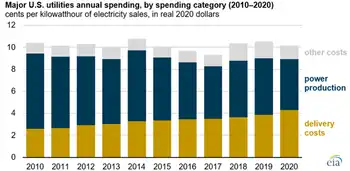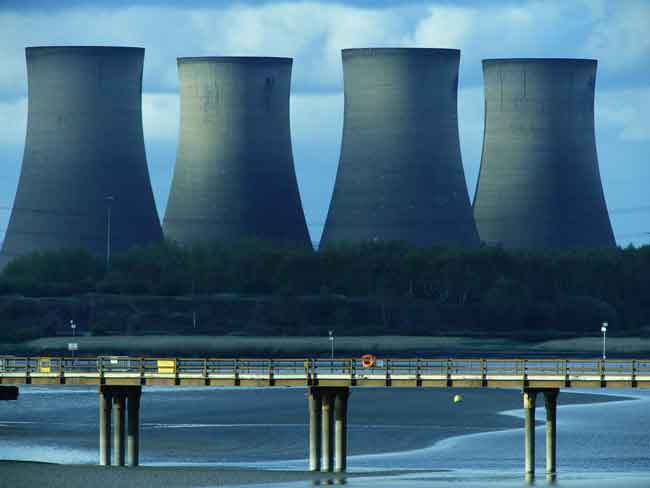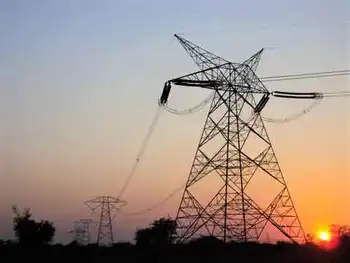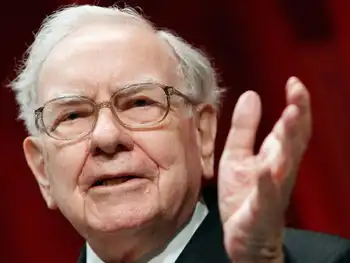Are pure electric vehicles the endgame?
This is the electric vehicle the German car maker will test in the real world next year. BMW, like all the other established auto makers, is trying to figure out what works and what does not in electric cars ? electric cars that some predict will comprise 10 per cent of what today is a global new-car market of 70 million units a year.
The lithium-ion battery pack behind the front seats is the biggest obvious problem. In a nutshell, the Mini E needs a mini battery. For now, the battery pack takes up all the room where passengers and cargo fit in a mainstream Mini Copper.
On the other hand, performance is not a problem, and neither is simplicity of operation. To get going, all I had to do was slip behind the wheel, plug in the key, hit the starter button and go. Go fast, that is.
The battery life indicator said I had a 60-per-cent charge left, but as with all electric cars, charge life is no indicator of performance. With a stab of the accelerator I was off, zipping through downtown Los Angeles and preparing to ask when I can buy one.
Not any time soon and not at any BMW Mini store, either. But if you live in the Los Angeles or New York area, you will see Mini Es on the streets. They'll be driven by people who have signed up to lease one of 500 test vehicles for a year. Details are on a special Web site — www.minispace.com — and some 9,500 people have already signed up, the company says. The monthly lease fee: $850 (US).
European auto makers, in particular, are preparing for the day when taxes and regulations will likely prevent gasoline- and diesel-powered vehicles from entering the core of major European cities such as London, Paris, Rome and Berlin. BMW officials say this test program will help the company perfect the Mini E's drive system and speed up production of a mega city car.
With BMW, performance, of course, is everything. So here, a 150-kilowatt electric motor produces the equivalent of 204 horsepower. Electricity is stored in a high-performance lithium-ion battery pack that is good for 240 km on a full charge. Power goes to the front wheels through a single-stage helical gearbox.
Here's the fun part: the Mini E will hit 100 km/hr from nothing in about 8.5 seconds and it feels faster. That's because electric power delivers instant torque to the drive wheels. It's quiet, it's smooth and it's a pleasing, if totally different, sensation compared to hot-shoe gasoline cars.
The battery pack's size does wipe out the two rear seats, so for now the Mini E is a somewhat impractical two-seater. Then again, BMW has only been working on this concept for 10 months. Improvements will come with time, investment and know-how.
And that's what the auto industry is doing now, despite a cash crunch brought about by the current credit crisis. The days of the "gas guzzler" seem over. We're now moving into a period where the surviving auto companies will build economical, gas-saving, low CO2-emitting, eco-friendly machines.
Even embattled Chrysler, with its show floor lights turned off, parked just three Dodge Ram pickups in its entire exhibit. Most of the space went to Chrysler's promised electric minivan, Jeep and Dodge sports car. At Toyota, it was a similar story — the compressed natural gas Camry and the Lexus RX 450h hybrid commanded the high traffic areas.
Ford, the only one of Detroit's auto makers to make a big splash in Los Angeles, was giving away T-shirts emblazed with the words, "We crush Camry," referring to the superior fuel economy of Ford's Fusion hybrid versus the Camry hybrid and also to the significant improvements made to the 2010 Fusion overall (the new model will be launched in January).
Ford says it benchmarked its new Fusion hybrid mid-size sedan against the Camry Hybrid and no one at Ford is being shy about making comparisons. The new Fusion will get U.S. government fuel mileage ratings of at least 39 miles per gallon in city driving, a six-mpg improvement over the similar-size Camry Hybrid, says Nancy Gioia, Ford's hybrid chief. In highway driving, the Fords should be at least two mpg better than Camry.
"We're going to target customers who do a lot of city driving — who really see the benefit of hybrids," Gioia said.
The Ford hybrid also will cruise at up to 47 mph (75 km/h) on electric power alone, much faster than rival models. And the engine will shut off more often than in the past, leaving the car running only on electric power, saving fuel and cutting emissions.
Among the new entries into the hybrid race is Hyundai. The South Korean auto maker announced that in two years it will market its first hybrids in North America. Hyundai's breakthrough: a revolutionary lithium-polymer battery that the company says will hold 20 times the charge in half the size of rivals' current hybrid batteries.
Hyundai said its Sonata sedan will get the hybrid system starting in 2010. The lithium-polymer battery has cells that are more sophisticated than the nickel-metal hydride batteries used by all hybrids today.
In addition to its size and charge advantages, it weighs 30 per cent less and is 10 per cent more efficient. Hyundai says its lithium-polymer batteries leapfrog lithium-ion batteries being developed for most plug-in hybrids coming in the next decade.
"A lot of people in the industry see pure electric vehicles as the endgame," said John Krafcik, vice-president of product development at Hyundai. "The only question is how to get to that."
And if the L.A. show is any indicator, there is no one single answer.
But that isn't stopping auto makers from moving ahead with their individual plans. Nissan-Renault CEO Carlos Ghosn said his company would be selling a competitively priced electric car in Oregon in 2010. The vehicle would go "mass-market" by 2012, he said.
Related News
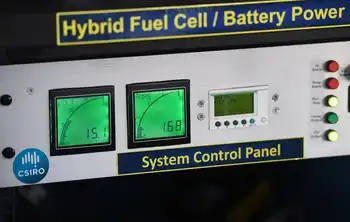
Chief Scientist: we need to transform our world into a sustainable ‘electric planet’
LONDON - I want you to imagine a highway exclusively devoted to delivering the world’s energy. Each lane is restricted to trucks that carry one of the world’s seven large-scale sources of primary energy: coal, oil, natural gas, nuclear, hydro, solar and wind.
Our current energy security comes at a price, the carbon dioxide emissions from the trucks in the three busiest lanes: the ones for coal, oil and natural gas.
We can’t just put up roadblocks overnight to stop these trucks; they are carrying the overwhelming majority of the world’s energy supply.
But what if we expand clean electricity production carried by…


